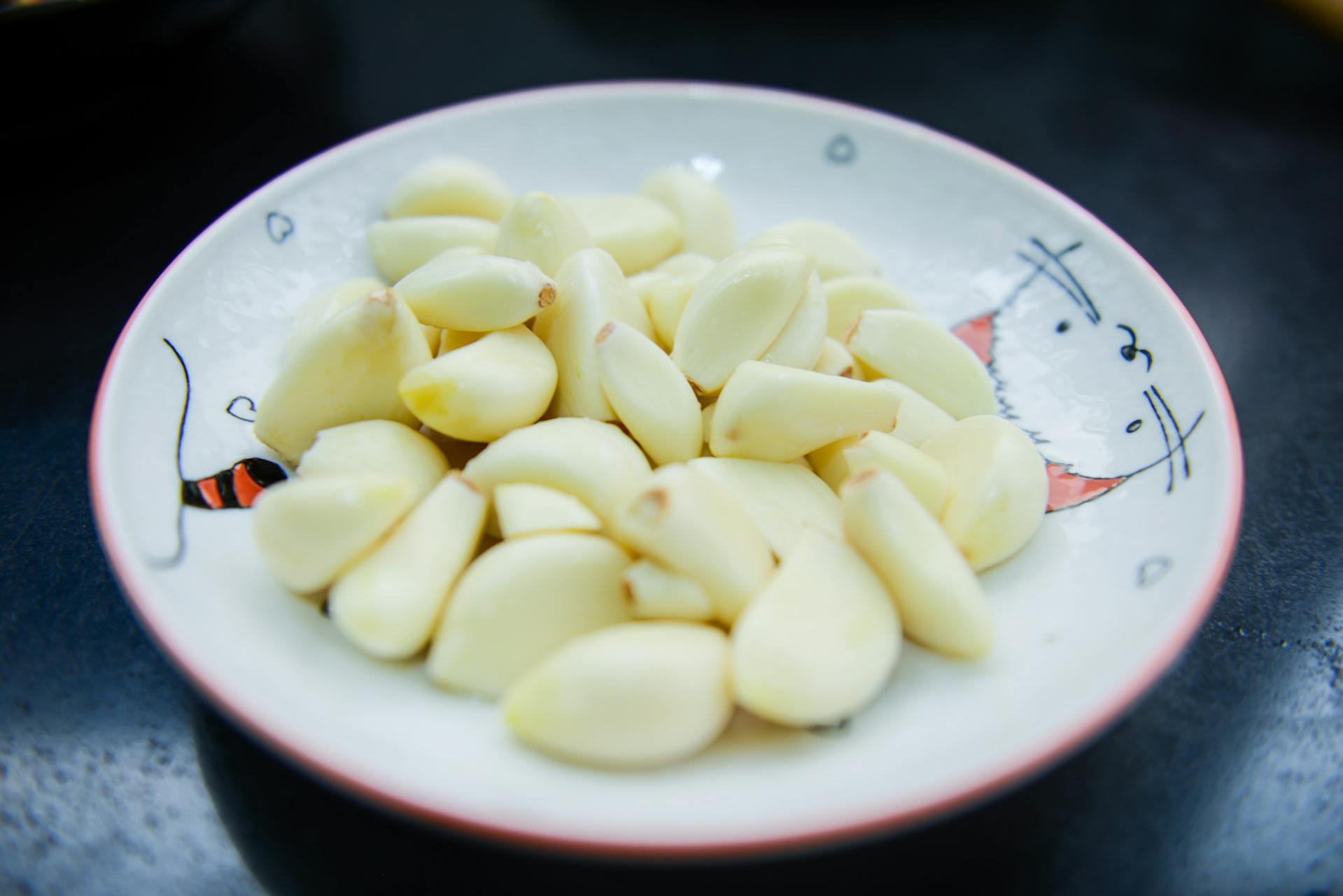Purple garlic is a variety of garlic known for its distinctive, purple-tinged skin, but it’s not just a color variation. This type of garlic has unique characteristics that set it apart from its white counterpart. The purple hue comes from anthocyanins, the same compounds that give blueberries and red cabbage their color. These pigments are powerful antioxidants, potentially offering additional health benefits.
Purple vs. White: Key Differences
Appearance: The most obvious difference is the color. Purple garlic has a vibrant, purple-striped exterior. When peeled, the cloves reveal a creamy white interior, much like regular garlic. The purple streaks are often more pronounced in colder climates.
Flavor Profile
- Stronger, more complex taste
- Often described as spicier or more robust
- Lingering flavor that develops as you eat
Cooks will find purple garlic packs a more intense punch than white garlic. Its flavor is often described as spicier, with a complexity that unfolds as you eat. Some people find it slightly sweeter, with nutty undertones.
- Clove Size and Structure: Purple garlic typically has fewer, larger cloves than white garlic. This can make it easier to peel and prepare. The cloves are arranged in a single ring around the stem, unlike white garlic, which often has multiple layers.
- Growing Conditions: Purple garlic thrives in cooler climates. It’s often referred to as “hardneck” garlic, meaning it produces a stiff central stem. This variety is generally hardier and can withstand colder temperatures better than softer-necked white garlic varieties.
- Shelf Life: Due to its hardneck structure, purple garlic tends to have a longer shelf life than white garlic. It can be stored for several months under proper conditions without losing its flavor or sprouting.
Culinary Uses: Elevating Your Dishes
Raw Applications: The bold flavor of purple garlic shines in raw preparations. It’s excellent in:
- Salad dressings and vinaigrettes
- Pesto and other herb-based sauces
- Garlic butter or aioli
Its robust taste means you might need less of it to achieve the desired flavor impact. This can be a plus for those who find regular garlic overwhelming.
Cooked Dishes: Purple garlic holds up well to cooking. It retains more of its flavor when roasted or sautéed compared to white garlic. Try it in:
- Roasted vegetable medleys
- Garlic bread or focaccia
- Stir-fries and pasta dishes
The complex flavor profile of purple garlic can add depth to slow-cooked dishes like stews and braises. It’s particularly good in Mediterranean and Middle Eastern cuisines.
Pickling and Preserving: The firm texture of purple garlic cloves makes them ideal for pickling. They maintain their shape and absorb flavors well. Pickled purple garlic can be a striking addition to a charcuterie board or used as a zesty condiment.
Health and Wellness Uses
Like white garlic, purple garlic is praised for its potential health benefits. Some people use it in home remedies for colds and flu. The higher concentration of antioxidants in purple garlic might offer additional immune-boosting properties. However, more research is needed to confirm these benefits.
Growing Your Own
Purple garlic can be a rewarding crop for home gardeners. It’s well-suited to cooler climates and can be planted in the fall for a summer harvest. The striking purple scapes (flower stalks) that emerge in late spring are edible and prized by chefs for their mild garlic flavor.
Purple garlic offers a unique twist on a kitchen staple. Its bold flavor, striking appearance, and potential health benefits make it worth seeking out. Whether you’re a culinary enthusiast or simply looking to add variety to your cooking, purple garlic can bring a new dimension to your dishes.





